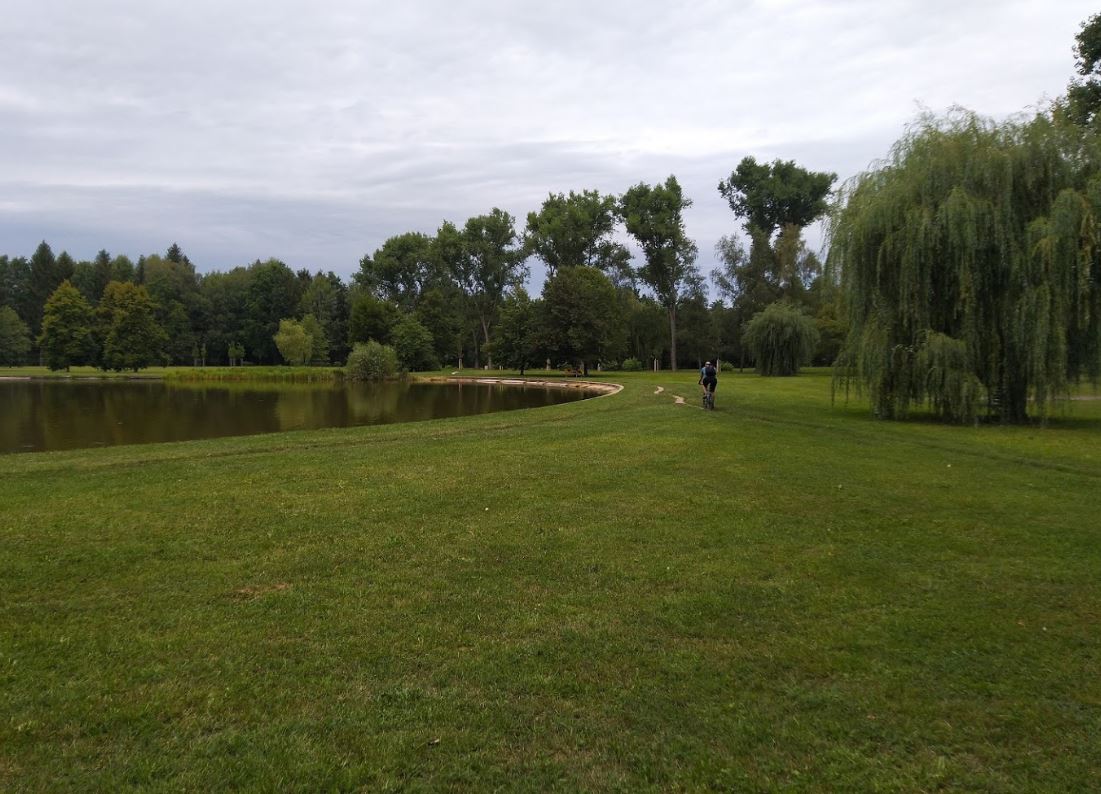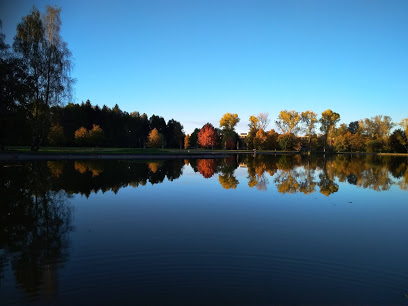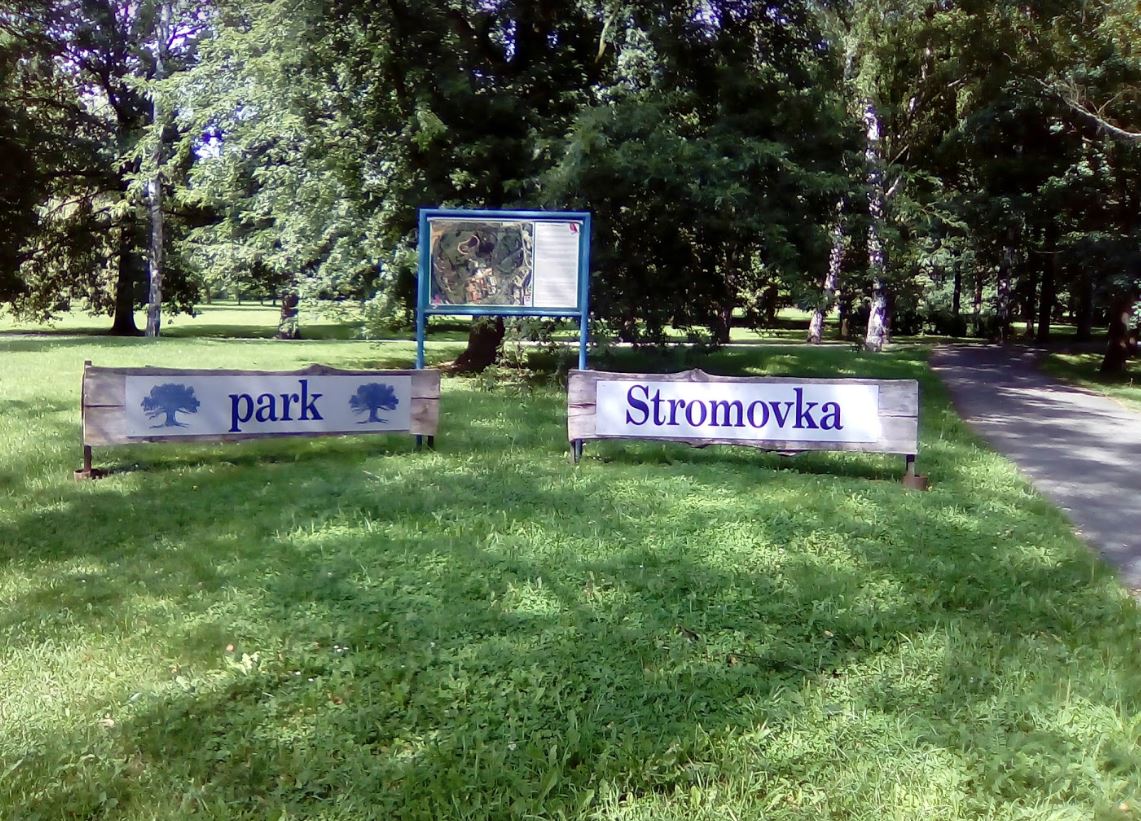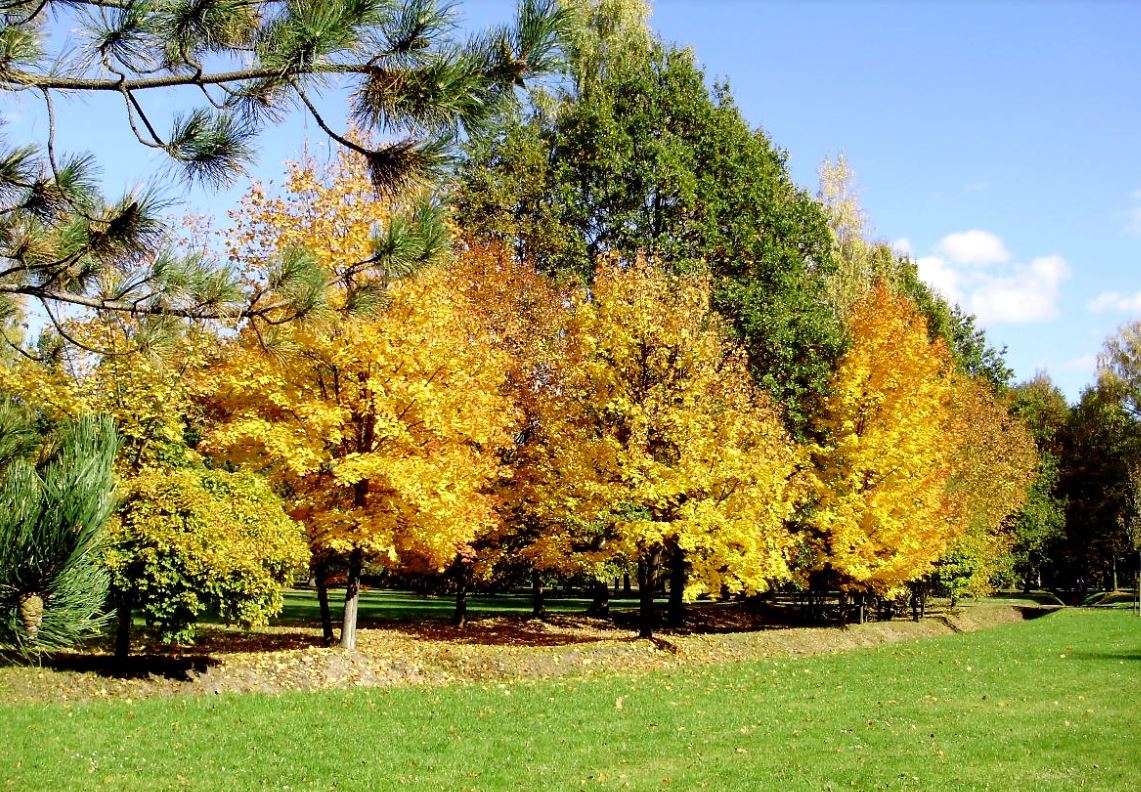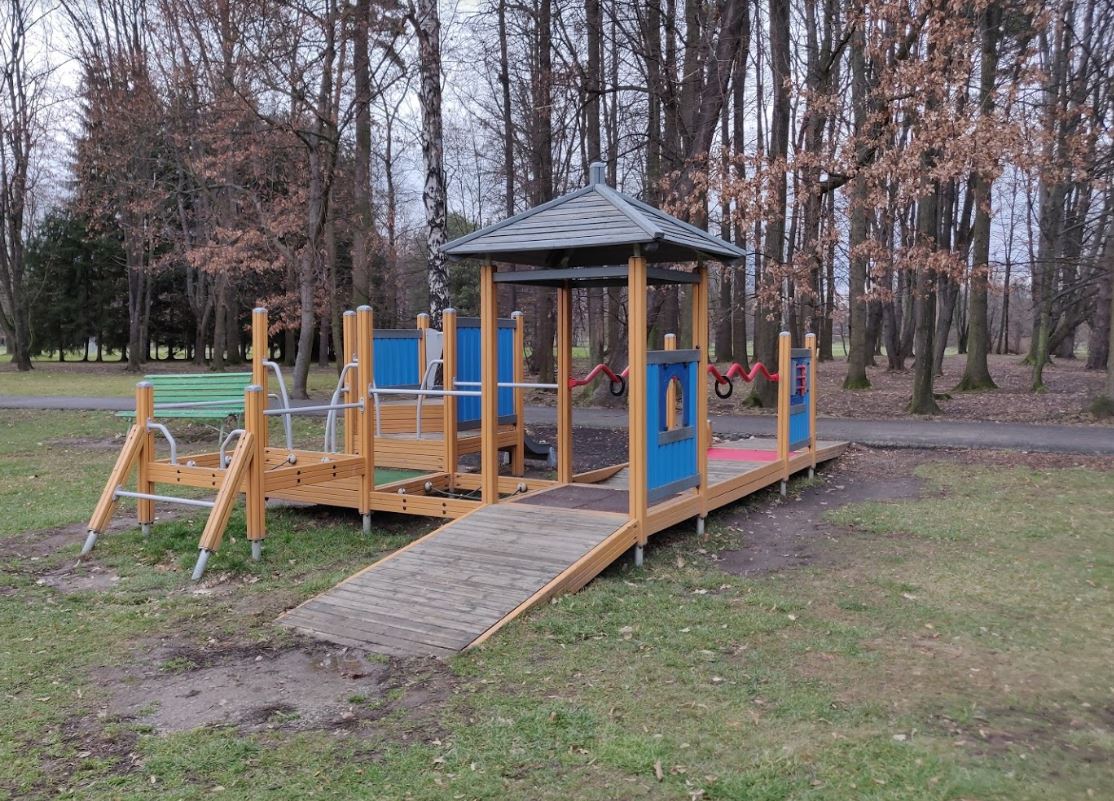When creating the garden, the fast growing trees were planted (Canadian poplar, silver birch, sticky alder and some willow). The proportion of long-lived trees was limited, but gradually growing, as they were used since the early 1990s to replace basic "worn out" positions. Suitable target stands are mainly linden leaf, oak, beech, sicamore and maple milk. The 1990s also saw the beginning of mowing, caring for lawns, and converting the Bagher Pool into a pool with an island where campfires are taking place. In the garden you can find oats, meadows and wetlands meadows. As the park condition improves, the number of mushroom species grows (about 300 species in 1997) and nesting birds (more than 400 breeding pairs of about 50 species in the same year).
Bird nest is unusual or protected here, for example wood pigeon, Fieldfare, wood oriole, green-headed woodpecker, larger-billed hawk, woodpecker, Winterpoll etc.
Sports and culture
The park is intertwined with a network of asphalt and unpaved paths, used by cyclists, built-in skiers and downtown with Stromovka connecting the F-bike path. For younger children, the so-called Orange Stadium is built in the eastern part of the park, while the elderly use asphalt playgrounds for the ball Volleyball and basketball. Pond pool allows sport fishing.
Until 1998, a wood carving seminar was held in Stromovka, which still had some results adorning the garden, but many sculptures had to be removed for safety. In 2008, this tradition was restored on downtown Sokolsky Island and according to the Department of Culture, the city does not exclude that statues can be reinstalled from other years in Stromovka.
x
T
R
F
I
H
I
We have 16614 Parks Now ... The First and largest platform for green public parks
Stromovka
Stromovka
Bagr, 370 01 České Budějovice, Czechia
Every Day : 24 Hours .
About Park
-
Preview
It is the largest park in Ceske BudejoviceImportant Information
-
Every Day
24 Hours -
Park Area
680000.00 SQM
-
Every Day
-
Intertainment Elements
Sports
Sitting places
Entertainment
Trips
Kids area
Private sports courts
-
Main Elements
- Cleanliness
- Green areas
- Open spaces
- Open paths for walking


